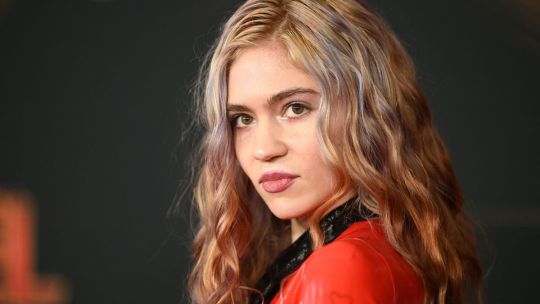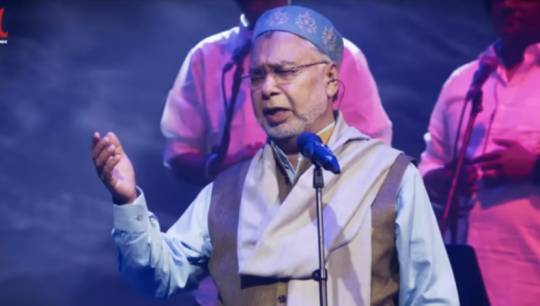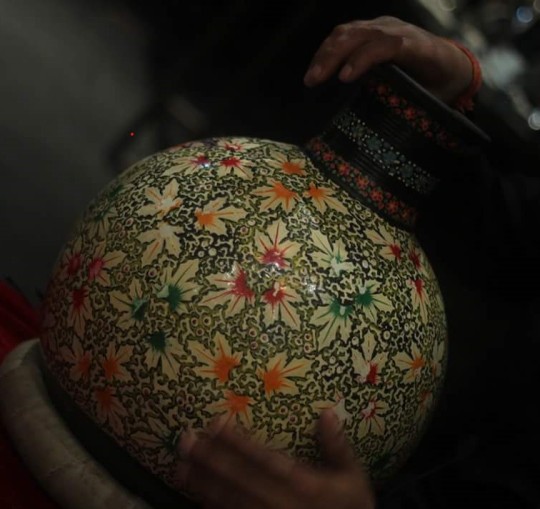#InnovativeArtistry
Explore tagged Tumblr posts
Text
Ishq, Inshallah
Is Kashmir getting on the South Asia’s music map?
By Faisul Yaseen
Faheem Abdullah and Rauhan Malik’s recent song ‘Ishq’ from ‘Lost; Found’ album has immortalised the work of Amir Ameer, a poet from Rahim Yar Khan, a city in the Punjab province of Pakistan.
It is breaking the internet and becoming a trending meme song. The song is also bringing closer music lovers across India and Pakistan, who are raving about Ameer’s mesmerising poetry and soothing voice of Abdullah and Malik. ‘Ishq’ may not be the best thing to have happened to the Kashmir music industry but it certainly has attracted traction and could play its part in putting Kashmir on South Asia’s music map.

Though boasting of rich musical instrumentals, magical voices, and insightful poetry, Kashmir’s music industry has suffered over the decades due to the Kashmiri language’s limited reach as only 6.8 million people speak Kashmiri. However, the experimentation of composing Urdu songs by young Kashmiri singers like Abdullah and Malik and a crop of new-generation Kashmiri singers is making the canvas bigger for them as Urdu boasts 71.29 million native speakers while the language is also understood by 571.3 million native Hindi speakers.
Like Abdullah and Malik, someone who took this experimentation to new heights in Kashmir was Yawar Abdal, a new-age Kashmiri singer who, in 2017, experimented with his single, ‘Tamana’, a multilingual song in Kashmiri, Urdu, and Persian languages based on the poetry of three legendary poets: Mehjoor (Kashmiri), Mirza Ghalib (Urdu), and Amir Khusru (Persian). The song became an instant hit on the internet. Abdal’s best work to date though might not be ‘Tamama’ but a lesser hit ‘Inshallah’. It is an artistic genius: multilayered and ambiguous and shakes a listener out of placid.

Abdal may not have the best voice among the new-age Kashmiri singers but he is heads and shoulders above others when it comes to crafting his work. Like his unconventional music, the visualisation in his music videos touches raw nerves and asks questions that only great art can.

Canadian pop artist Grimes says, “Only art ever saved me, everything else has betrayed me.” And Abdal’s music and music videos never betray your trust.

Jyotsna Bharti in ‘Mixing Old Melody with New Melancholy: Meet Kashmir’s Fresh Folksingers’ writes, “At a time when youngsters elsewhere are de-rooting themselves and trying westerns, many new-age Kashmiri musicians and singers are popularising their roots. Following the footsteps of their forefathers, they’re finding solace in Rabab, pleasures in poetries and life in mountains…”
These new-age Kashmiri singers like Ali Saifuddin, Mohammad Muneem Nazir, Saim Bhat, Ishfaq Kawa, Rasiq Khan, Waqar Khan, Kabul Bukhari, Arsalan Nizami, Ubair Taj Beigh, Baabarr, Mudacer, Shazia Bashir, Aabha Hanjura, Vibha Saraf, and Rahul Wanchoo wear Kashmir on their sleeves, sport Kashmiri shawls and Pherans, use traditional musical instruments, and shoot music videos in the picturesque locales.
They have taken a leaf out of the book of their ancestors like Raja Begum, Shamima Dev Azad, Ghulam Hassan Sofi, Abdul Rashid Hafiz, Kailash Mehra Sadhu, and Neeraja Pandit and popularised it among the new generations of Kashmir offering them music from their roots and educating them that Kashmiri music might be as rich as the Bollywood and western music and much like the Punjabi music could carve out an identity of its own.

Kashmiri music represents its rich melodic heritage. It has played a significant role in shaping and expressing its cultural identity. Kashmiri music has served as a powerful tool to preserve Kashmiri traditions, values, and stories.
Kalhana in his magnum opus ‘Rajatarangini’ wrote in the 12th Century CE that Kashmiri musical instruments have extremely aged roots. A 4th-century CE tile found during excavation from Harwan shows the impression of a female musician playing a drum. The other person is shown playing a veena. King Bhiksacara (1120-21 CE), who himself played these instruments was fond of ‘Chhakri’ (folk choral singing) which continues to be popular in Kashmir.
According to Kalhana, folk musical instruments like earthen pots and brass vessels were used by Kashmiri people from very early times. Prominent musical instruments played in Kashmir include Surnai, Santoor, Saitar, Nai, Tumbaknari, Noot, and Rabab.

Tumkanari (goblet drum) is usually used by womenfolk on occasions like engagement and marriage functions. In Central Asia Tumkanari called Tumbakh or Tunbak is now made of wood while Kashmir maintains its originality and the musical instrument is still made of baked clay. Similarly, the use of Noet (earthen pot) in Kashmiri music is mentioned in Nilmata Purana as well as Kalhana’s Rajtarangini.

Kashmiri music also has influences from the Central Asian music.
“We even borrowed their music and instruments,” historian Prof Fida Muhammad Hassnain wrote in ‘Common Cultural Links between Kashmir and Central Asia’.
According to B C Deva, the string instruments, Rabab and Sarangi, came to Kashmir with the influence of Muslims.
While some historians state that the most popular instrument used in folk music in Kashmir is the Rabab borrowed from Persia, others suggest it was adopted from Afghanistan centuries ago and has been an integral part of Kashmiri music culture ever since.

These musical instruments have also played a key role in the evolution of Kashmiri Sufiana music.
The instruments used by the Sufiana musicians are quite different from those used in Indian classical music and Kashmiri folk music. The prominent instruments include Santoor, Kashmiri Saitar, Saaz-e-Kashmir, and Tabla.
Shabir Ahmad Mir in his paper ‘Mystical Music: Safeguarding Sufiana Mausiqi – a Vanishing Art Form of Kashmir’ for the International Journal of Intangible Heritage writes, “Sufiana mausiqi (music) continued to flourish during the reign of Sultan Yusuf Shah Chak (1579-1586). His queen, Habba Khatun, is often credited with introducing a maqam ‘Rast-Kashmiri’ by making a little structural variation on maqam Rast-Farsi. Chak and his queen were great patrons of music as well as musicians themselves, and they devoted their time to embellishing Kashmiri classical music. Rast-Kashmiri still forms the most popular maqam of the Sufiana repertory.”
In Kashmir, marriage and engagement functions, Eid festivals, Radio Kashmir Srinagar, and Doordarshan Kendra Srinagar played a key role in keeping the Kashmiri music alive.

Music often has a massive cultural impact as is illustrated by the influence of The Beatles and The Rolling Stones. The Beatles is considered as the most influential band in the history of popular music and for defining the countercultural movement of the 1960s. Similarly, The Rolling Stones, considered one of the greatest Rock n Roll bands of all time with their raw energy and rebellious image defined the cultural landscape of the 1960s and beyond.

Abdullah, Malik, and Abdal may just have begun their musical journeys but the route they are taking to their stardom might shape Kashmir’s musical heritage for future generations. Who knows next ‘Coke Studio’ shift in South Asia could come from the Valley! Ishq and Inshallah might be the shape of things to come from Kashmir.
Greater Kashmir
#LostFoundAlbum#KashmiriMelodies#NewWaveKashmir#MultilingualMusic#RootsRevived#SoulfulSounds#MusicalHeritage#KashmiriArtistry#FusionFinesse#InnovativeArtistry#CulturalResonance#TraditionInTune#SufiSoul#KashmiriExpressions#MusicalExploration#PoeticRhythms#EastMeetsWest#RedefiningMusic#KashmiriIdentity#HarmonyUnveiled#KashmiriMusicRevolution#SouthAsiasNewMelody#BreakingBarriersWithMusic#IshqUnitesIndiaPakistan#InshallahForKashmirMusic#NewAgeKashmiriSingers#FromRootsToStardom#SufiyanaLegacyLivesOn#ThePowerOfRabab#CokeStudioInKashmir
0 notes
Text

🌟 OBEY Season 10: Artistry Meets Athleticism - The Top 9 Unveiled! 🌟
Gentlemen, welcome to one of OBEY's most celebrated challenges ever, "Artsy Athleticism"! 🎨💪 In this spectacular showcase, our nine remaining contestants have transcended the boundaries of creativity to deliver a breathtaking fusion of athleticism and artistry. Abstract forms, intricate portraits, and mind-bending optical illusions have taken center stage in #OBEYseason10, making it a season to remember!
But how does your voice influence the outcome, you ask? It's simple. On Instagram, Tumblr, and Twitter (X), your likes, shares, saves, and comments are your votes. And for the first time ever, we've introduced Instagram Stories voting, where 'Yes' clicks contribute to positive votes, while positive Story votes are adjusted based on the number of negative 'No' votes. Your participation is key to determining the victor! 🗳️📱🌟
Now, let's shift our focus to Oleksandr from Ukraine, who chose to create a captivating portrait in his unique style. What sets him apart is his brilliant idea to reverse the colors of his own rubber suit in his painting. This artistic twist showcases his ingenuity and adds a layer of depth to his remarkable work of art. Oleksandr continues to be a standout contender in #OBEYseason10!
Stay tuned as we explore more artistic brilliance, athletic excellence, and fierce competition in the quest for the ultimate OBEY crown. This season, expect the unexpected as we celebrate the harmonious union of art and athleticism! 🌐🔥
#OBEYseason10 #ArtsyAthleticism #VoteNow #MeetTheContenders #InnovativeArtistry 🎨🇺🇦💫
14 notes
·
View notes